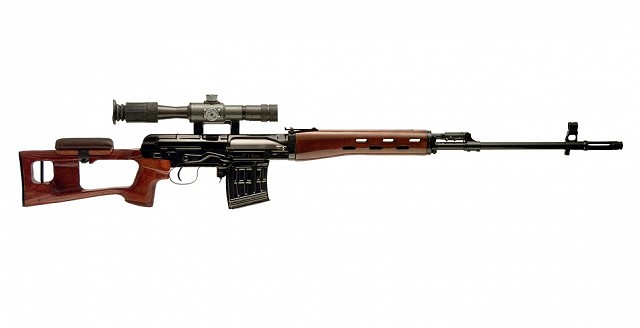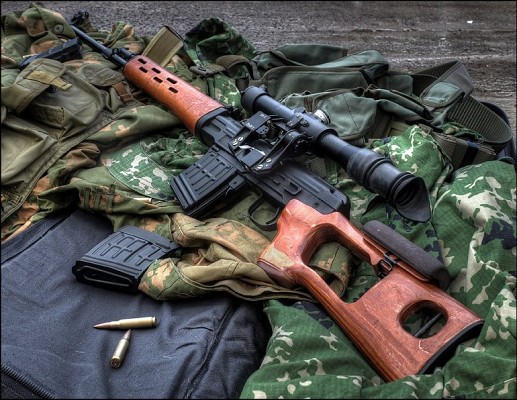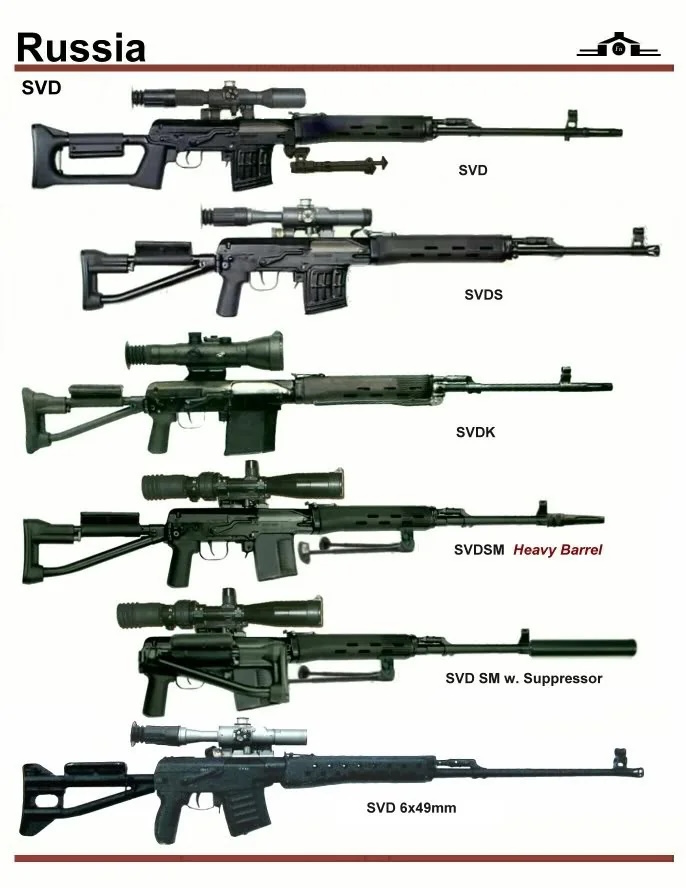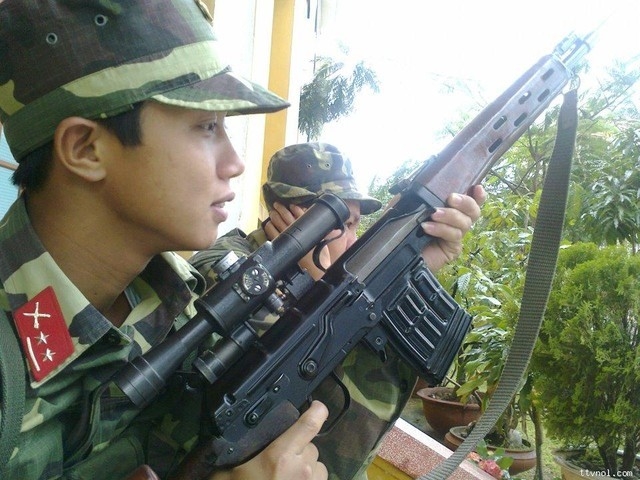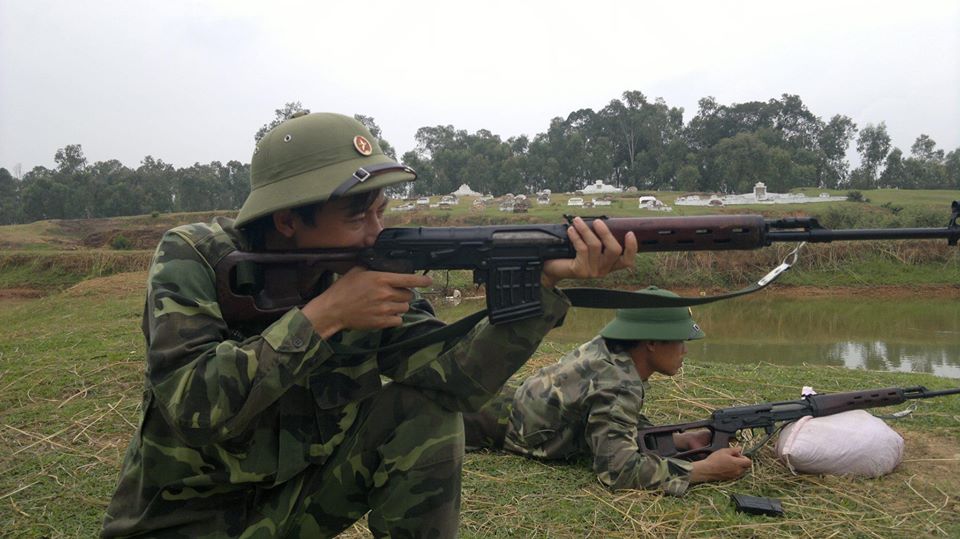SVD
| Factions | Weapon | Icon | Classes | Ammo |
|---|---|---|---|---|
 VC |
 SVD |
 |
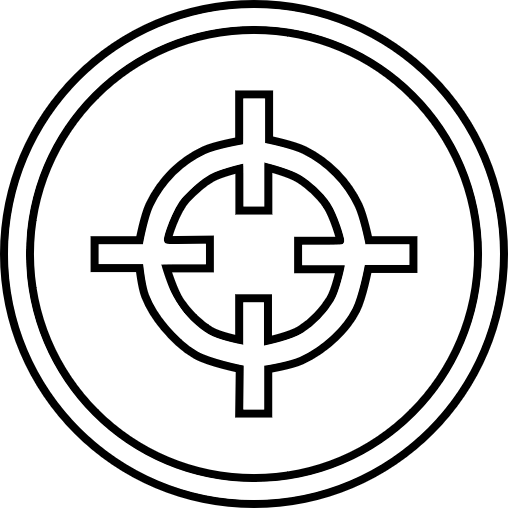 Sniper Sniper |
10 / 30 |
| Damage Base | Headshot × | Chest × | Stomach × | Leg × | Arm × | Bayonet | Rifle Grenades | Reload Speed | |
|---|---|---|---|---|---|---|---|---|---|
| Partial | Empty | ||||||||
| 45 | ×2.4 = 108 | ×1.28 = 57.6 | ×1.23 = 55.35 | ×0.8 = 36 | ×0.7 = 31.5 | YES | NO | 2.833 Seconds | 3.733 Seconds |
| Designation | Weapon Type | Fire Modes | Fire Rate | Bullet Spread ° | Range Modifier | Muzzle Velocity | Projectile weight | Weight |
|---|---|---|---|---|---|---|---|---|
| SVD | Sniper Rifles | Semi | 30 RPM | 8° & 0.25° ADS | 0.965 | 830 m/s | 9 g (138.89 gr) | 4.3 kg (9.48 lbs) |
| Full name | Caliber | Place of Origin | Date | Manufacturer | Barrel Length | Total Length | Weapon Script Name |
|---|---|---|---|---|---|---|---|
| Снайперская Винтовка Драгунова | 7.62x54mm | Soviet Union | 1963 | Kalashnikov Concern Norinco |
24.4 in (620 mm) | 48.2 in (1,225 mm) | weapon_svd |
The SVD (Snayperskaya Vintovka Dragunova) is a Soviet semi-automatic sniper rifle designed by Yevgeny Dragunov in the late 1950s and adopted by the Soviet Army in 1963. The rifle is known for its reliability, accuracy, and semi-automatic capability, which allows for quick follow-up shots. During the Vietnam War, the SVD became significant due to its use by North Vietnamese forces and Viet Cong guerrillas, often supplied through Soviet military aid. Its presence in the conflict exemplified the widespread influence of Soviet weaponry and tactics, contributing to the challenges faced by U.S. and South Vietnamese forces who had to counter these well-equipped adversaries.
HISTORY
The SVD was designed as a squad support weapon to provide precise long-range engagement capabilities for troops, following the Warsaw Pact's adoption of the 7.62×39mm cartridge and assault rifles. At that time, NATO used battle rifles with the 7.62×51mm NATO cartridge, which allowed them to outrange Warsaw Pact counterparts. Developed between 1958 and 1963, the SVD was chosen over other designs for its accuracy and durability and entered service in July 1963. Serial production began in 1964 by Izhmash, now Kalashnikov Concern.
The SVD has been the standard squad support weapon for several countries, including former Warsaw Pact nations. China produced reverse-engineered copies as the Type 79 and 85, and Iran made a clone called the Nakhjir 3. The SVD is being replaced by the Chukavin SVCh in Russian service, which began mass production in February 2023. The Chukavin SVCh uses SVD-compatible box magazines when chambered for the 7.62×54mmR cartridge. In Ukrainian service, the SVD is to be replaced by the Zbroyar Z-10, chambered in 7.62×51mm NATO.
The SVD resembles the AK family for standardized manual of arms but is often misidentified. It features a rotating bolt with three locking lugs, a hammer-type striking mechanism, and a manual lever safety selector. The SVD is semi-automatic, with a free-floating firing pin that can cause accidental discharge if obstructed. It operates on a short-stroke gas piston system with a two-position gas regulator for varying conditions. The rifle uses a 10-round detachable box magazine and has a machined receiver for improved precision.
The SVD's barrel is thin to save weight, chrome-lined for corrosion resistance, and has a twist rate optimized for different ammunition types. The rifle must meet precision standards of 0.7 MOA median deviation in three 10-shot groups using 7N1 sniper cartridges. The 7N1 cartridge was developed for the SVD, later replaced by 7N14 with a hardened steel penetrator.
The SVD has adjustable iron sights and was originally issued with a PSO-1 optical sight, which mounts to a Warsaw Pact rail. The PSO-1 features bullet drop compensation and enables engagement of area targets up to 1,300 meters. The effective range in combat varies between 600 and 1,300 meters, depending on the target, ammunition quality, and shooter skill.
SOURCE

